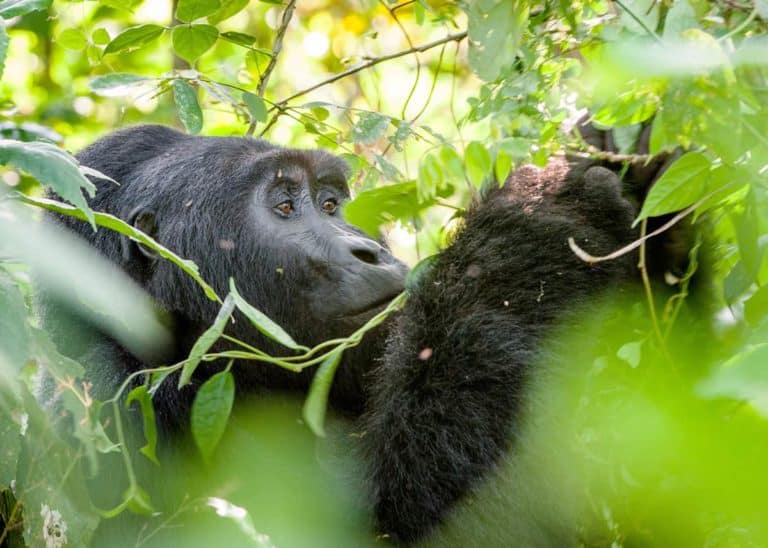33 African Leopard Facts (Panthera pardus pardus)
In this post, you’ll learn 33 African leopard facts. You’ll learn about their habits, habitat, diet, differences with other cats (including cheetahs), black panthers, and much more. Plus lots of photos and amazing videos!
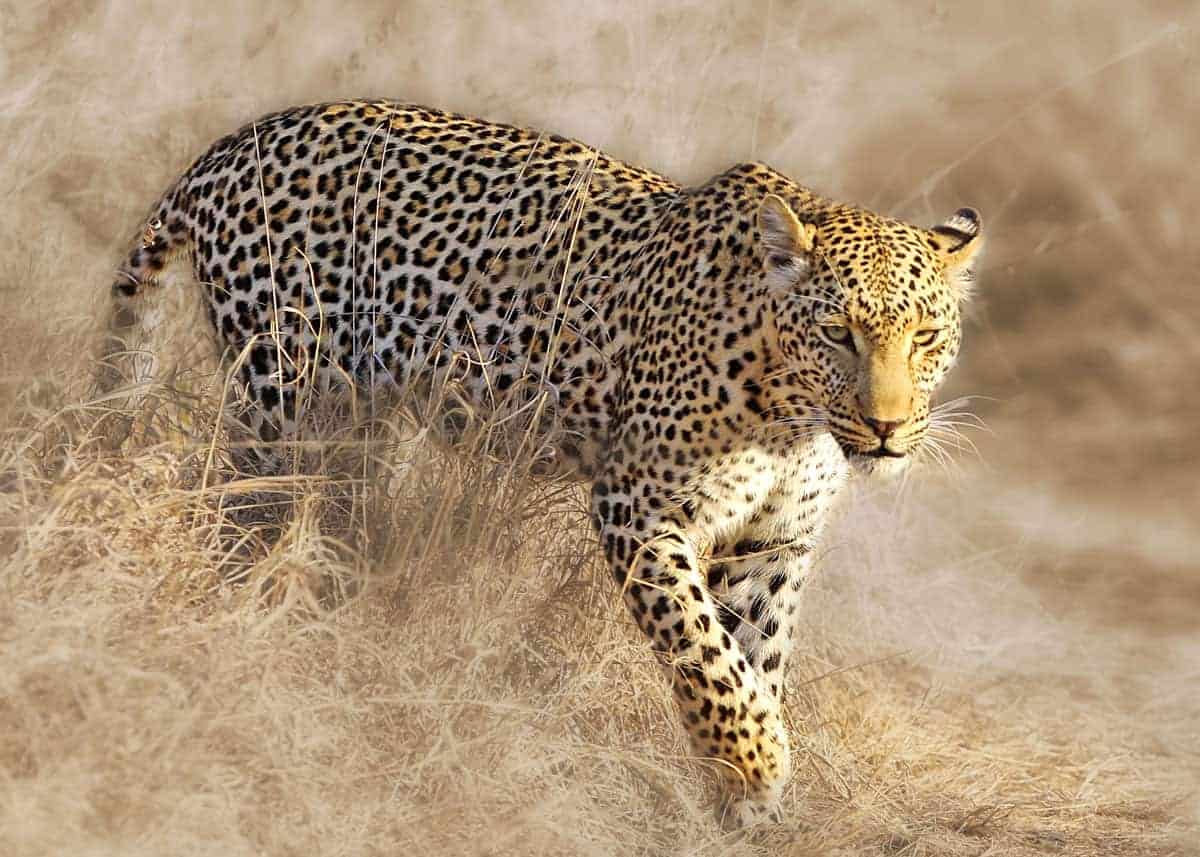
For your safety: we recommend a good pair of binoculars and a good safari-grade camera with zoom lens. These will allow you to see and shoot leopards without risking a face-to-face encounter.
33 African Leopard Facts
African leopards are some of the biggest, deadliest cats in the world. They’re also some of the most misunderstood and misrepresented. Frequently mistaken for cheetahs, jaguars, and tigers, it takes a little learning to be able to distinguish them from others of their kind.
Are you ready to learn more? Here are just a few African leopard facts to get you started.
1. Do leopards usually live in Africa?
Leopards live all over the world in zoos and national parks, but most of their wild populations can be found in Africa and India.
These leopards have their own distinct sizes, diets, markings, environments and species classifications, so they’re separately known as “African leopards” and “Indian leopards.”
2. What types of leopards live in Africa?
The main branch of the leopard family is called panthera pardus. The African leopard is classified as panthera pardus pardus.
Before the 21st century, there were also dozens of sub-species for the African leopard based on the region where they lived. For example, the Zanzibar leopard was known as panthera pardus adersi while the Somali leopard was called panthera pardus nanopardus.
After looking at genetic samples, however, scientists decided that all of these subspecies were the same. They all had the same chromosomes. So they reshuffled the scientific classifications.
List of Previous African Leopard Subspecies (Outdated)
Today, every leopard that lives in Africa is classified as an “African leopard” with the scientific name panthera pardus pardus.
If you ever run into African leopards being called something different, you’re reading an older or outdated book.
Here are the (now outdated) list of Panthera pardus subspecies.
- Central African leopard Panthera pardus pardus Sudan and northeastern Democratic Republic of Congo
- Barbary leopard Panthera pardus panthera North Africa
- West African forest leopard Panthera pardus leopardus Rain forests of Western and Central Africa
- Cape leopard Panthera pardus melanotica Southern Africa
- East African leopard Panthera pardus suahelica East Africa
- Somali leopard Panthera pardus nanopardus Arid zones of Somalia
- Ruwenzori leopard Panthera pardus ruwenzori Ruwenzori and Virunga Mountains
- Abyssinian leopard Panthera pardus adusta Ethiopian Highlands
- West African leopard Panthera pardus reichenovi Savannas of Cameroon
- Zanzibar leopard Panthera pardus adersi Unguja Island, Zanzibar
3. What is the habitat of the African leopard?
African leopards have the amazing ability to thrive in almost any kind of environment.
They’ll slink through wet, leafy rainforests; they’ll sprawl in the middle of hot and dry deserts. They can be found at the tops of high mountains and in the caves of deep waterfalls. There have even been reports of African leopards living on volcanoes and drinking 99°F water!
4. What parts of Africa have leopards?
African leopards used to live all over the continent, but it’s estimated that they only occupy 25 percent of the range of their ancestors. For example, they’ve gone almost completely extinct in Northern Africa; the only leopards left in places like Morocco are the ones born and bred in nature reserves.
As for the rest, they can be found in scattered areas throughout sub-Saharan Africa. A distribution map can give you an exact picture, but here are a few of their most populous countries:
- Western Africa: Ghana, Guinea, Nigeria, Sierra Leone, Togo
- Eastern Africa: Ethiopia, Kenya, Tanzania, Sudan, Rwanda, Uganda
- Central Africa: Cameroon, Chad, Gabon
- Southern Africa: Botswana, Malawi, Namibia, Swaziland, Zimbabwe
5. How fast are African leopards? Can they swim? Can they jump?
African leopards are quite agile. They can run up to 36 miles per hour, which makes them faster than tigers but slower than cheetahs. They can also jump 10 feet high and 20 feet across.
They’re good swimmers, too. Unlike other cats, they don’t mind the water, and they can spend hours crouched in a riverbank while stalking their prey.
They’ve also been known to play and splash in the water while in captivity.
They love to climb trees. African leopards will move from branch to branch for feeding, napping, relaxing and observing other animals.
When they descend from their trees, they’ll come down headfirst. They have an innate sense of balance that keeps them from crashing down and hurting themselves.
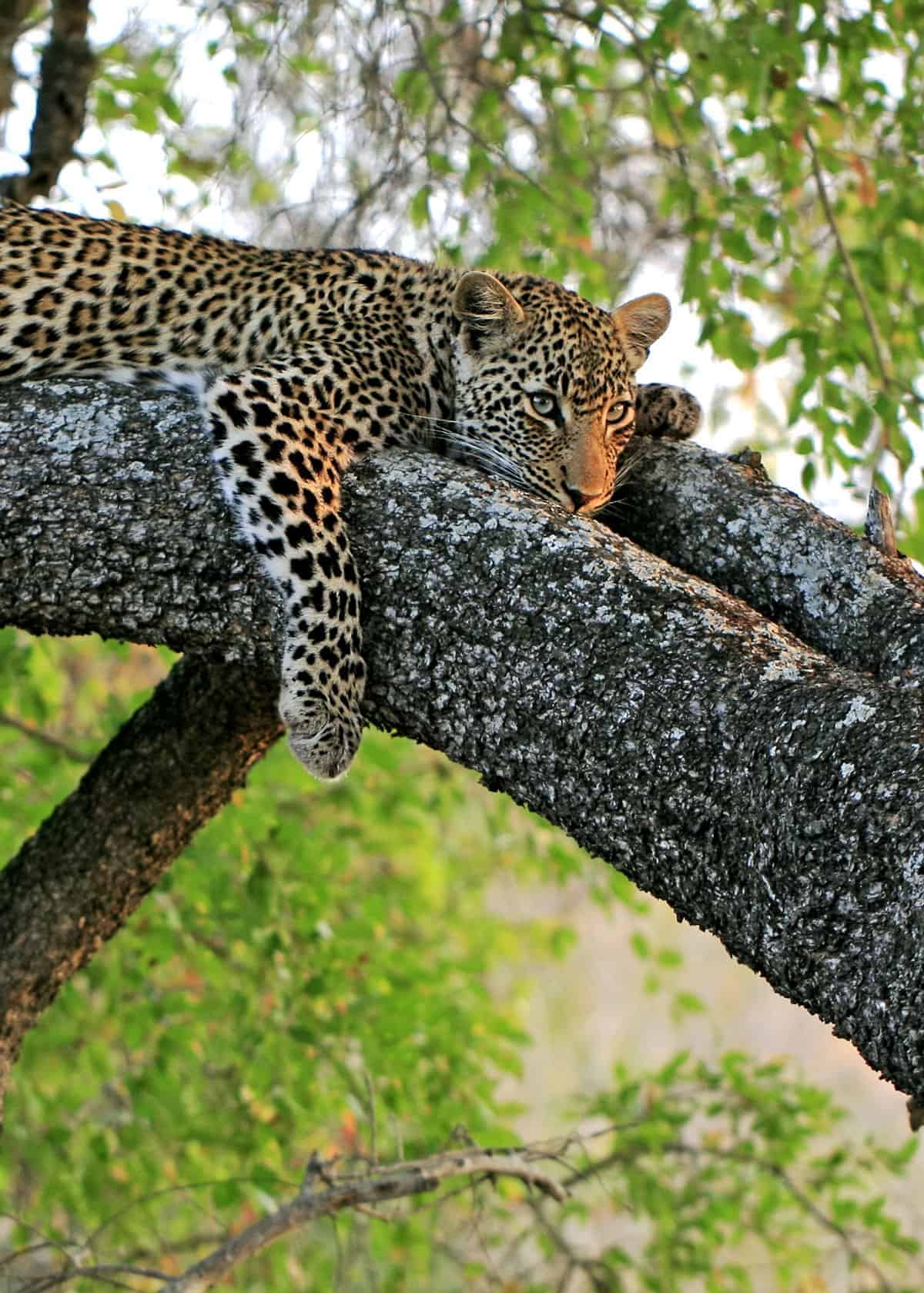
6. What do African leopards eat?
African leopards have a diverse diet. They’ll eat everything from beetles to baboons, and they aren’t afraid of large prey. They’ll go after animals that are much heavier than them, including giraffes, zebras, small antelopes, wildebeests and wild boars.
They’ll even stalk a specific type of antelope known as the eland, and male elands can reach up to 2,000 pounds.
Learn more about African animals.
7. How do African leopards hunt?
African leopards like to hunt at night. They’re most active between sundown and sunrise. Their cat eyes enable them to see their prey in the dark, and their keen sense of smell allows them to track and kill even the stealthiest of rabbits as they scuttle around at night.
Once they’ve locked on their dinner, they’ll ambush the animal by springing into action out of a tree or bush. They’ll use their powerful jaws and claws to subdue it or wrestle it to the ground. The killing blow is usually a suffocating one, or they’ll bite at the neck of their prey until the other creature dies of blood loss.
Leopards can digest just about every part of their kill. They’ll eat hooves from impalas and gazelles; they’ll eat skin from snakes and crocodiles. They might leave these parts for other scavengers if they aren’t particularly hungry, but there’s nothing physically stopping them from eating the entire animal.
8. Do leopards really hide their kills in trees?
Yes. If they can’t eat the entire animal at once, African leopards will stash their leftovers in a tree. This is to prevent other predators from finding and stealing it. Leopards are often troubled by lions, tigers, and hyenas that will make off with their kills if given the opportunity.
African leopards are also known for their remarkable ability to carry dead, heavy carcasses high into the branches. They can drape the body of a 200-pound baby giraffe over branches that are 20 feet high!
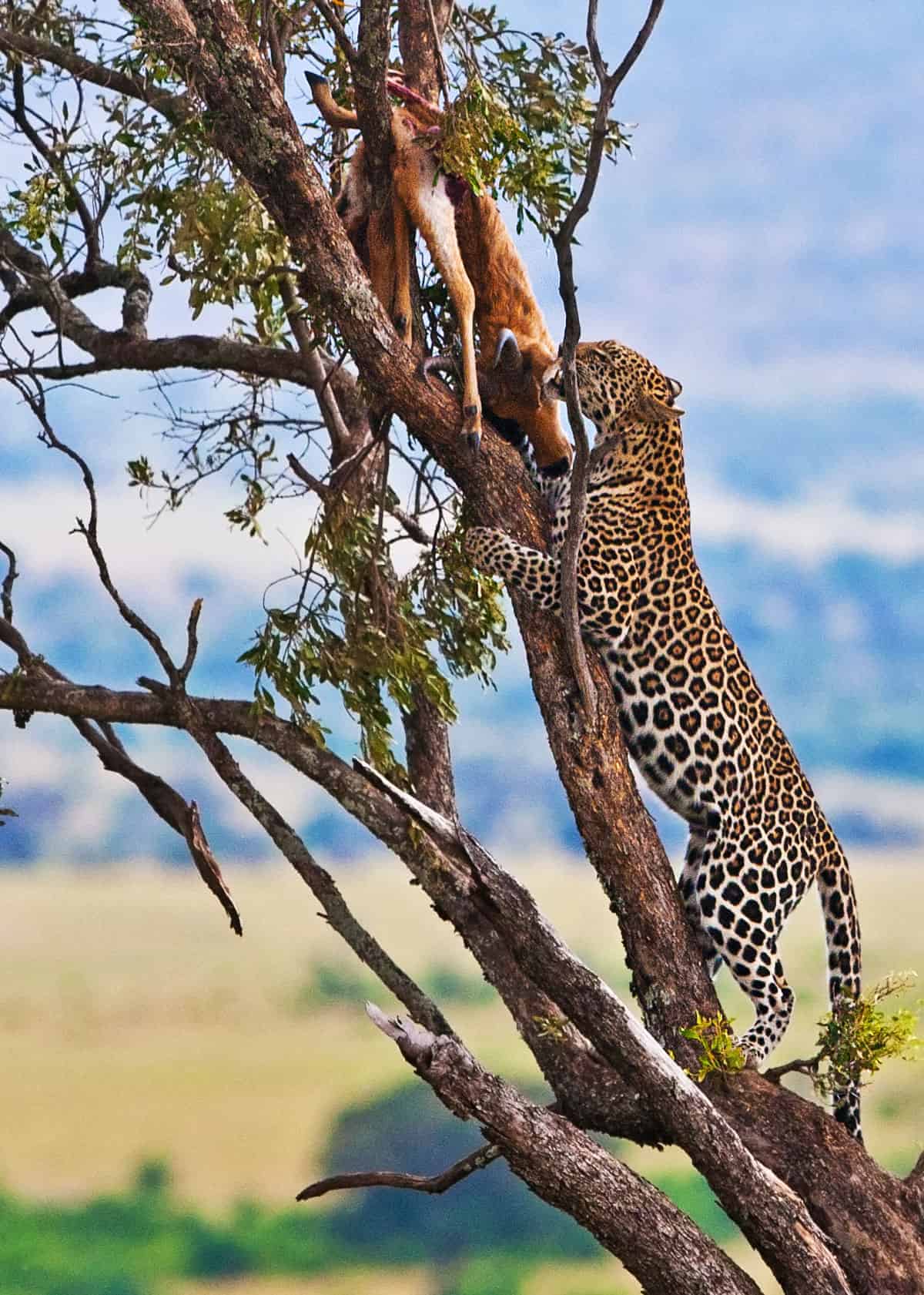
9. How often do leopards feed?
Leopards don’t have to feed as often as other cats. They can go several weeks without needing to hunt, and they tend to “graze” their meals over the course of several days rather than gobbling it all up at once.
It’s estimated that they consume about 900 pounds of meat per year in total.
10. How dangerous is the African leopard? Is it aggressive?
African leopards are extremely dangerous. While not as aggressive as other big cats, they’re talented hunters that have a lot of deadly tools at their disposal, and this gives them an edge over many other species in the animal kingdom.
They can run, jump, swim and climb; they can take down prey three times their size and haul around the carcass like it’s nothing. Their spots keep them camouflaged during the day when they relax among the dappled leaves, and their sharp senses give them an edge over their prey at night.
Basically, there’s a reason why the leopard is considered an apex predator. They’re at the very top of the food chain.
11. Do leopards kill and eat humans?
Yes. Leopards are less likely to attack humans than lions and tigers, but they’re still responsible for dozens of deaths per year, and “man-eating” leopards are feared across the globe.
- Indian leopards: Most deadly attacks come from Indian leopards rather than African leopards. The “Leopard of Panar” was an infamous man-eater that killed more than 400 people in the early 1900s, and he was from India. So was the “Leopard of Rudraprayag” and the “Leopard of Yelagiri Hills.” They both racked up kill counts in the 100s, and they were both Indian leopards.
- African leopards: These aren’t exactly cuddly, however. There have been many deaths attributed to them as well. They’re particularly feared by people in rural tribal communities due to their nocturnal nature. They can enter villages in the dead of night and drag off their victims without anyone noticing.
Gruesomely, leopards have been known to develop a taste for human flesh. There have been reports of leopards ignoring livestock in favor of killing their human shepherds. They also get more active after cholera and influenza outbreaks when corpses are left outdoors.
12. How common are African leopard attacks?
It’s hard to get a number on leopard attacks since they’re frequently under-reported by the poor and rural villages that suffer from them the most.
According to old British records, however, there were 11,909 deaths in India that were caused by leopards between 1875 – 1912. By contrast, there have only been five deaths at the Kruger National Park in Africa between 1992 – 2003.
This should give you an idea of the discrepancy between Indian and African leopard attacks. While they’re both fatal, one is a lot more common than the other.
13. Are African leopards endangered?
According to the International Union for Conservation of Nature (IUCN), leopards are considered “vulnerable” but not “endangered.”
Their population is on the decline, and there aren’t enough mature adults mating in the wild to counter all of the hunting and habitat loss that they face, but their numbers aren’t critically low just yet.
Many conservation efforts are being made to preserve the leopard species. They’re on the watch list of the Convention on International Trade in Endangered Species (CITES), and they’re considered a protected species in places like Lope National Park and Tai National Park. African lobbyists are also fighting to make it illegal to buy and sell leopard parts.
14. How many leopards are left?
It’s estimated that there are 12,000 – 14,000 leopards left in the world. Some sub-species are more vulnerable than others.
For example, China’s Amur leopards are almost completely extinct; there are less than 60 of them struggling to survive in the wild.
15. What does an African leopard look like?
African leopards have light-colored fur with spotted markings across their entire bodies. Their exact coloring will depend on their environment.
If they live in a sunny location, they’re more likely to be a combination of white, yellow, gold and bronze; if they live somewhere colder or darker, they might be beige or even brown.
The spots of an African leopard are known as “rosettes.” Like their name suggests, they unfold like roses rather than being perfectly circular. The rosettes of a leopard are unique to each individual.
African leopards have a long, dexterous tail that they use to wrap around everything from tree branches to their own cubs. Female leopards have a white-spotted tail to help cubs find them in thick grasses.
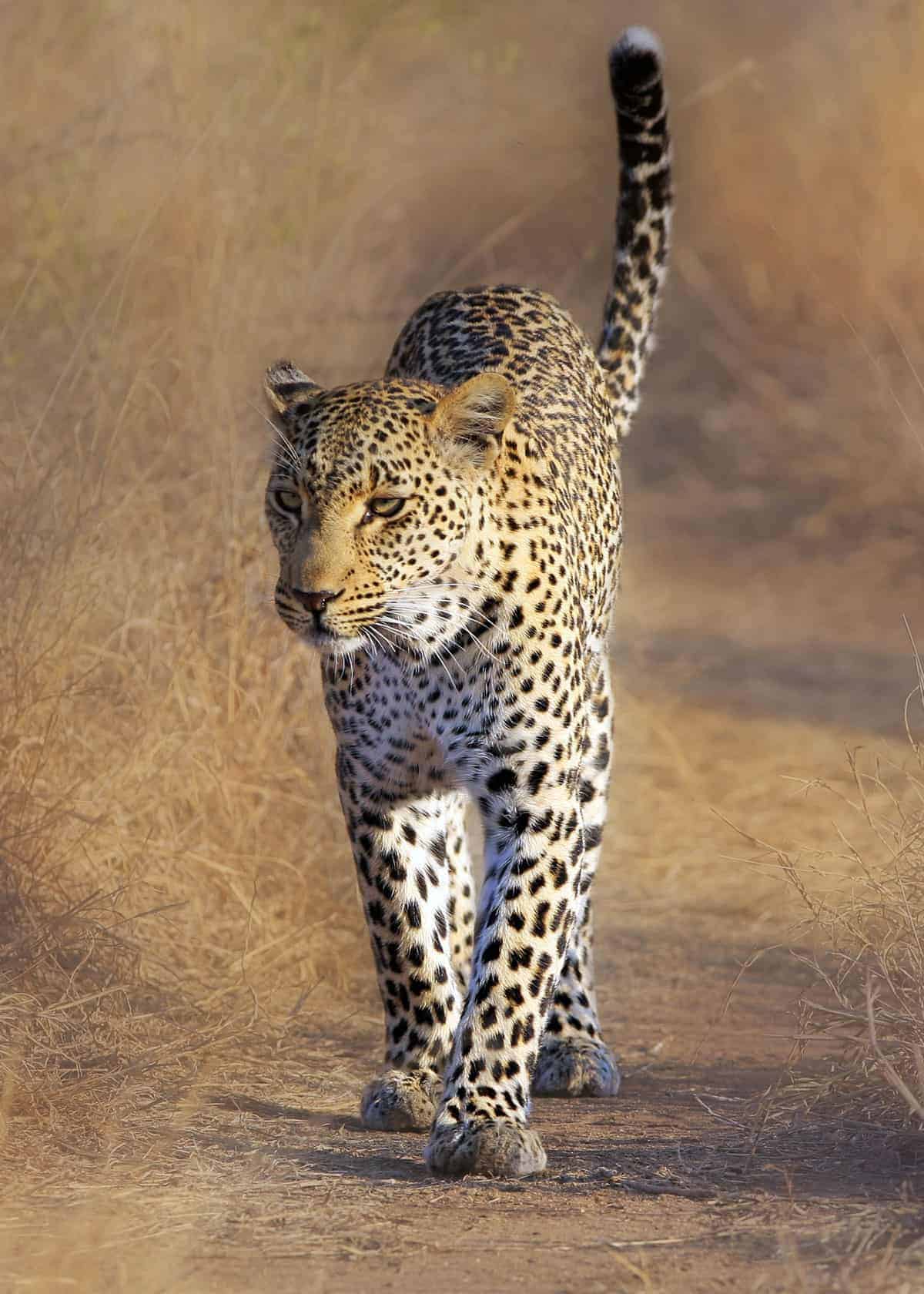
16. How big is a male leopard? Are males bigger than females?
Male leopards range from 100 – 200 pounds. Their bodies are around 3 – 6 feet long, but if you were to stretch out their tails in a straight line, you could add another 25 – 40 inches to their total measurements. Their tails are actually longer than their bodies are tall.
As with most members of the cat family, male leopards are bigger than females. Females are about 10 percent smaller on average.
The biggest leopard on record was a 212-pound male who lived in Namibia.
17. Are black panthers real?
Yes. “Black panther” is a term that applies to both leopards and jaguars, and they’re real animals that exist in the wild.
They’re usually distinguished from each other with the label “black leopard” or “black jaguar.”
Learn more: Panther vs Jaguar: 7 Differences Compared
18. What causes a black leopard?
Black leopards have a recessive allele that causes an excessive amount of pigmentation. This covers all of their spots and makes them look like they’re a solid black color.
If you examine them closely, however, you can still see the rosettes on their skin; the markings are just overshadowed by the darker color of their fur. It’s an effect known as “ghost striping.”
19. How do black leopards differ from other leopards?
Black leopards are only found in dense, shady habitats like mountains and rainforests. There are no black leopards in sunny and open deserts. This suggests that it’s an environmental adaptation that was bred in certain species over time.
Another fun fact about black leopards is that they can be born in the same litters as non-black leopards. It’s entirely possible for a mama leopard to have one light cub and one dark cub.
Behaviorally, black leopards are just like regular leopards. They simply look different.
20. Do African leopards have any enemies?
There are no predators of the African leopard. However, they can be killed by extremely large animals like the Nile crocodile, and conflicts between leopards and other scavenging predators can turn deadly.
Lions and leopards are particular rivals since they can both climb trees to look for food.
The biggest period of vulnerability for African leopards is when they’re young. Leopard cubs are small and blind, so they’re easy prey for birds, snakes, jackals and hyenas if their mother isn’t around.
They’ll grow up and consume these animals right back, but when they’re babies, there’s nothing that they can do to defend themselves. This is one of the reasons why leopard cubs have a high mortality rate. Around 50 percent of cubs won’t live to adulthood.
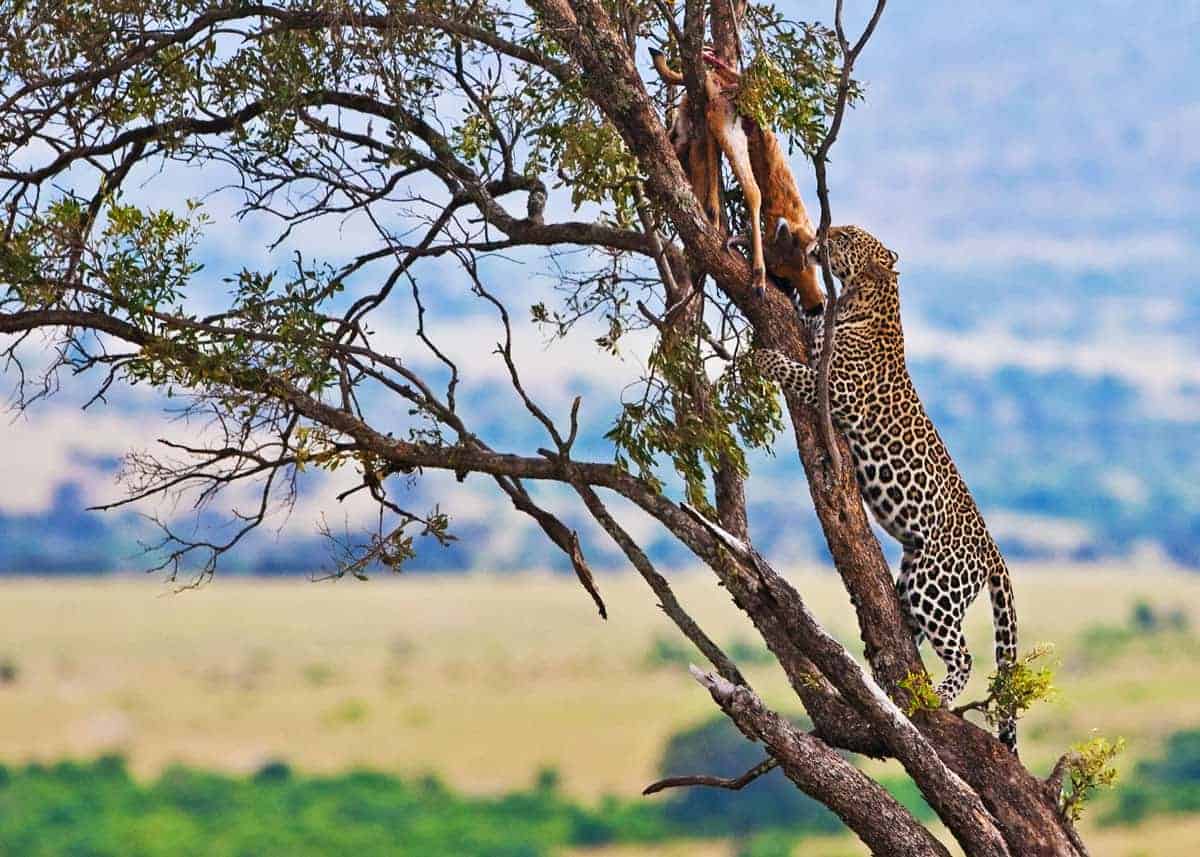
21. Do African leopards fight other big cats?
Sometimes. Leopards, lions and cheetahs tend to go after the same prey, so there’s a lot of competition between them.
They’ve been known to fight over the spoils of a hunt. However, they don’t usually eat each other or attack each other for the purpose of feeding. They’ll squabble over the remains of an antelope, but once someone has been killed or given up, they’ll leave each other alone.
22. What’s the bite force of an African leopard?
African leopards have some of the strongest jaws in Africa. Their bite force measures between 300 – 400 pounds per square inch (psi). This puts them above wolves, jackals, chimps and many other native species. It’s also twice the bite force of humans.
23. What’s the difference between an African leopard and an Indian leopard?
Aside from their geographical differences, the easiest way to tell an African leopard from an Indian leopard is to measure it. African leopards are taller, heavier and stronger than their Asian counterparts. They also have a bigger bite force, but it isn’t recommended that you test that!
24. What’s the difference between a cheetah and a leopard?
Leopards and cheetahs are often mistaken for one another in the wild. They come from the same branch of the cat family, so it’s understandable, but there are definitely differences if you know where to look.
For starters, cheetahs are usually smaller and sleeker than leopards. They measure 2 – 5 feet and weigh 50 – 150 pounds while leopards are 3 – 6 feet and 100 – 200 pounds.
They also have a different face shape; cheetahs possess distinctly “feline” features with round noses and small, drawn-back ears, but leopards have stronger jaws and broader skulls.
In addition, their markings are different. Cheetahs have more rounded spots while leopards have rosettes that can appear in many different shapes.
Leopards have retractable claws, because they are not always needed. Cheetahs, on the other hand, have claws that don’t retract because they are needed for speed and quick turns while hunting.
Here is a nice summary of the differences between leopards and cheetahs, by Urban TV Uganda.
Learn more about king cheetahs.
25. How long can an African leopard live?
Wild leopards live between 12 – 17 years. In captivity, they can survive around 20 – 23 years. According to the Animal Aging and Longevity Database, the oldest leopard was 27.3 years old before he died in the Madrid Zoo.
26. What do you call a group of leopards?
A group of leopards is called a “leap” but there isn’t much occasion to use this word. Leopards are solitary creatures that only interact with other members of the species when they’re mating or taking care of their young.
Studies from national parks suggest that most leopards keep a distance of .5 miles between each other at all times.
That said, there’s an occasional overlap of territories between males and females. It’s also not uncommon for non-related females and cubs to tolerate each other in widespread areas.
Generally speaking, however, leopards just aren’t social animals. You won’t find them hanging out in trees together.
27. When and where do African leopards give birth?
African leopards can give birth at any time of year. There’s no specific mating season. Expectant mothers will make a nest in a safe, secluded area like a cave, thicket, bush or tree hollow.
It only takes a few months for cubs to be born. There are 2 – 4 cubs per litter. They’re tiny, blind and hairless for the first few days of life, so they’re extremely dependent on their mother for food and protection.
28. How long does the African leopard baby stay with its mother?
Leopard cubs will stay with their mother for a good 18 – 24 months. They start hunting, exploring and socializing long before that, but they won’t go off on their own until they’re mostly mature.
Once they leave, however, they’re gone for good. Leopards retain no attachment to their parents or grown-up cubs. They lead solitary lives in their own territories.
29. What happens if a leopard cub doesn’t have its mother?
The odds aren’t very good for cubs without moms. Not only are they vulnerable to bigger, stronger predators, but they don’t have anyone to feed them or teach them how to hunt. Most cubs will die without the careful attention and protection of their mother.
However, there’s an occasional miracle in the wild. One lioness made headlines in 2017 when she was found nursing a lone leopard cub. It happened in Tanzania, and it shocked animal experts around the world because of the long-standing rivalry between lions and leopards.
This kind of thing had literally never happened before. The lioness had cubs around the same age as the leopard, and it had been wandering the area around the lioness’s den. All factors came together to form an unprecedented event.
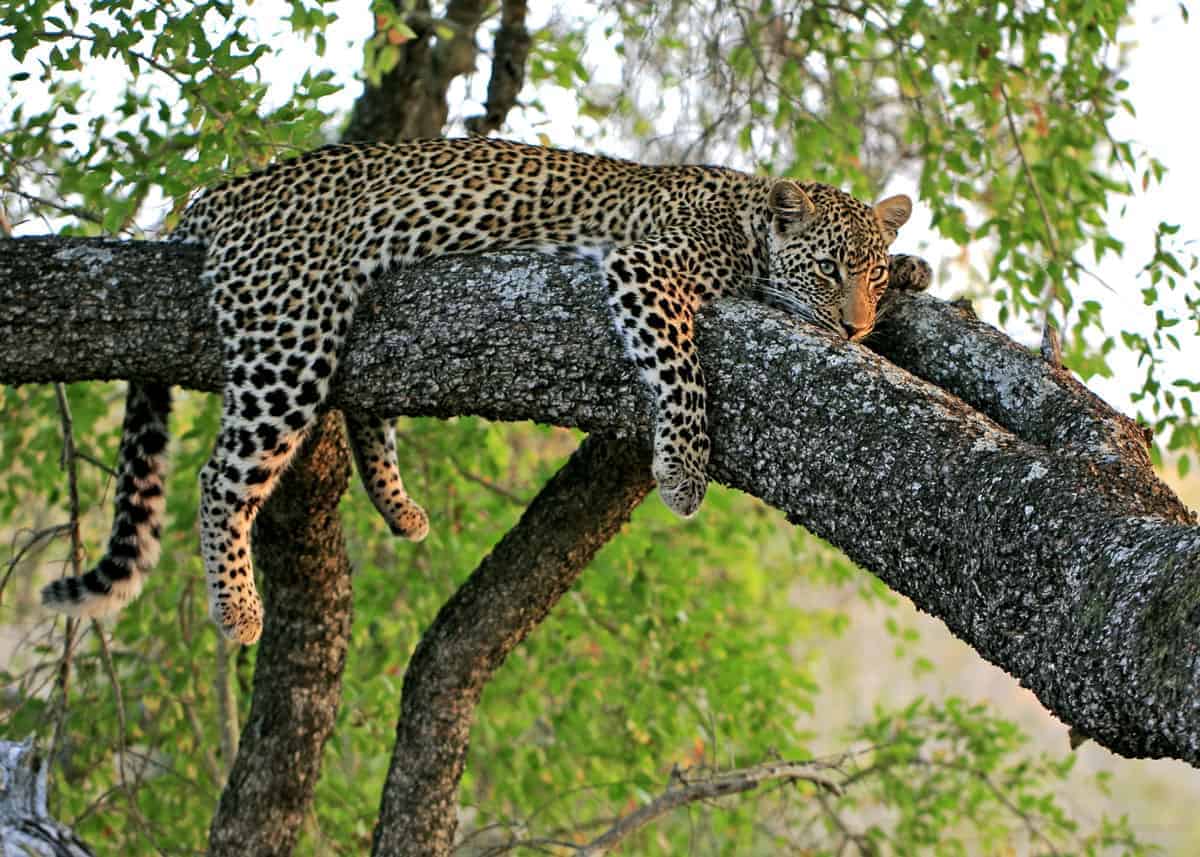
30. What threats face the African leopard?
Humans are the single biggest threat to African leopards. In addition to being hunted as trophies, their furs, skulls, bones, claws, tails and internal organs are used in a variety of medicines and cosmetics.
Some African nations are trying to crack down on these trades, but there’s still a thriving market for them.
Another danger to the African leopard is loss of habitat. People are cutting down their trees and building cities over their old hunting grounds. This drives them out of the area as they seek food, shelter and mates elsewhere.
One of the more insidious threats to the African leopard is something called fragmentation. Since their population is being scattered and thinned out, they aren’t able to breed like they used to, and this is part of the reason why their species is becoming vulnerable to extinction.
It’s hard for the leopards to repopulate, and it’s hard for experts to get a read on their numbers and come up with appropriate conservation measures. It’s a sticky situation all around.
31. What noises do African leopards make?
African leopards will growl, hiss, spit and snarl when danger is near. Mothers and cubs will purr for each other. They’ll even make rough versions of a “meow” when they’re young.
One little-known fact about leopards is that they can roar just like lions. It isn’t quite as loud, but it’s still something that they can pull out of their arsenal when trying to threaten another animal. For example, a leopard might roar at a wild dog that’s trying to steal its kill.
32. Have any leopard species come back from the dead?
The Zanzibar leopard was thought to be extinct until a lone member of the species was caught on camera in 2018. They were eradicated back in the ’70s and ’80s after anti-witchcraft paranoia swept through the country. The people believed that the creatures were being controlled by shamans and sorcerers who were sending them into villages to devour the people, so everyone started killing them in a fright.
This decimated the population to the point of extinction. For many years, the only remnants of Zanzibar leopards were faded skins that were displayed in museums. Then, in 2018, a documentary series called Extinct or Alive set up camera traps around the country. Their footage revealed a solitary leopard slinking around an island where leopards had been extinct for decades.
Further plans are being developed to see if there are more Zanzibar leopards just hiding in the country and waiting to be re-discovered.
33. Who are the most famous fictional leopards?
The most well-known leopard is probably Bagheera from The Jungle Book. He’s a talking leopard who helps the young Mowgli survive in the wilderness, and he narrates the 1967 Disney film. However, it should be noted that he’s an Indian leopard rather than an African leopard.
An example of African leopard mythology can be found in the legends and images that surround the superhero T’Challa in Black Panther. He fights with a special bodysuit that embodies the spirit of the historical black panthers of Africa, and as you’ve already learned, black panthers in Africa are caused by recessive genes in leopards.
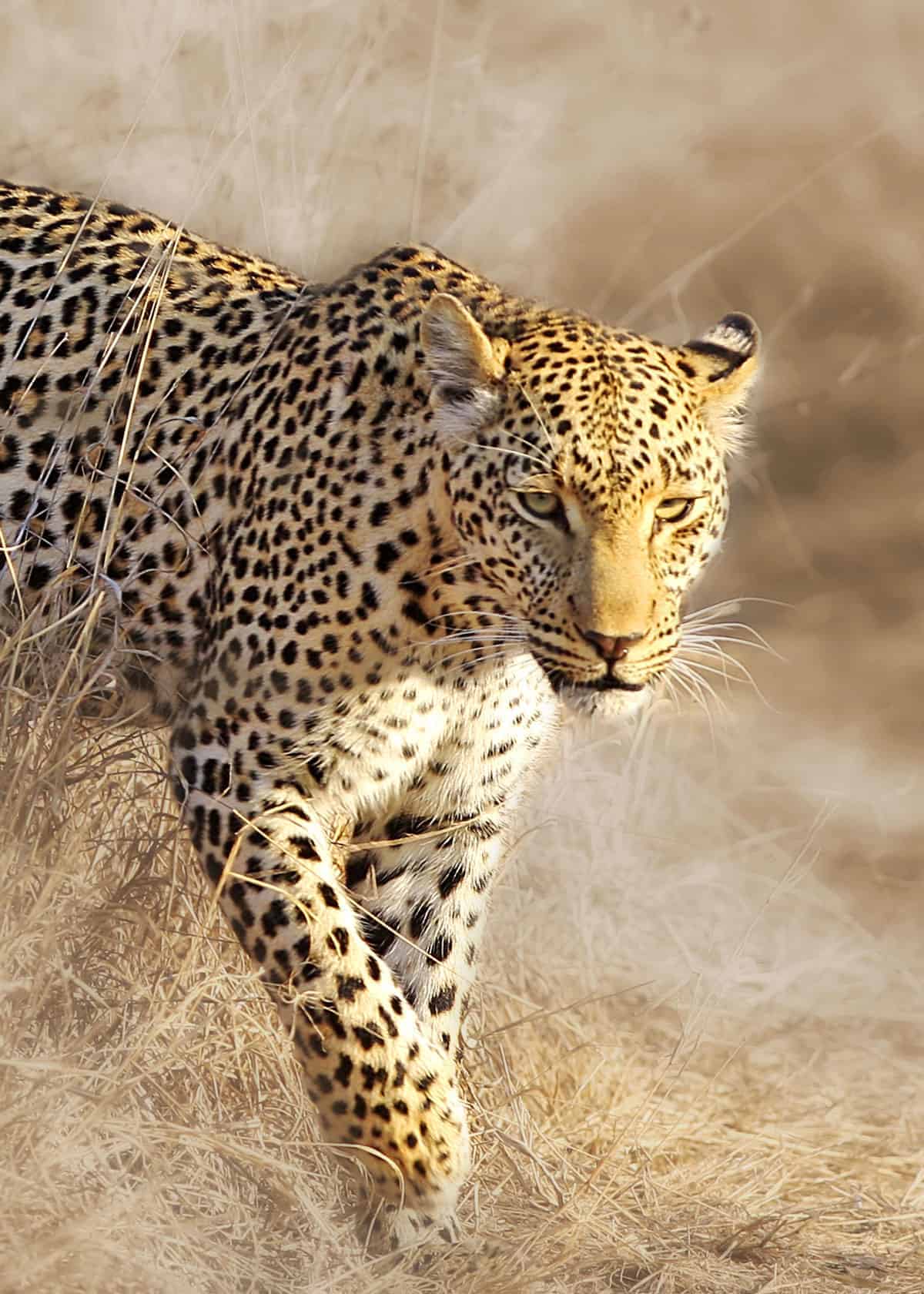
African Leopards: Treasures of the South
These are just a few African leopard facts that can help you understand more about the continent’s most beautiful and standoffish felines. It might be hard to get a glimpse of them, especially in countries where they’ve been hunted to extinction, but their rarity just makes them more interesting!






